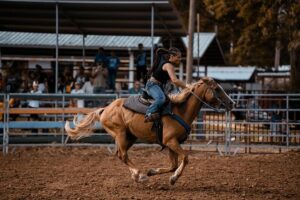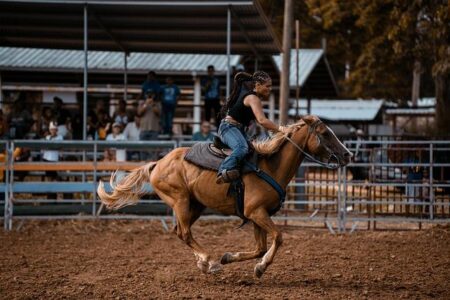Religion in Public Schools: Navigating a Delicate Intersection
The presence and influence of religion within public education remain a deeply nuanced and often contentious topic in the United States. Recent data from the Pew Research Center reveals a wide array of opinions among Americans regarding religious expression in public school settings. As legal frameworks and educational policies continue to evolve, it is essential to grasp public attitudes to better understand how communities strive to uphold both religious liberties and the constitutional separation of church and state. This article delves into the latest insights from Pew, examining prevailing viewpoints and emerging trends that inform the ongoing dialogue about religion’s place in public schools.
Balancing Religious Expression and Secular Education
Public schools function as microcosms of society, bringing together students from diverse religious and non-religious backgrounds. This diversity presents a complex challenge: how to honor individual religious freedoms while preserving the secular foundation mandated by the Constitution. School leaders must carefully interpret legal guidelines and community expectations to maintain an environment that respects all beliefs without endorsing any particular faith.
Perspectives on religion in schools vary widely among stakeholders:
- Advocates support the inclusion of religious clubs and moments of silence, viewing these as protected forms of free expression.
- Critics caution against any actions that might be perceived as government endorsement of religion, emphasizing the importance of church-state separation.
- Educators often prioritize neutrality, aiming to create inclusive spaces that welcome students of all faiths and those without religious affiliation.
| Area of Concern | Common Issues | Proposed Approaches |
|---|---|---|
| Curriculum Content | Potential religious bias in teaching materials | Implementing fact-based, unbiased instruction with oversight committees |
| Extracurricular Activities | Religious clubs perceived as exclusive | Ensuring equal access for all student organizations |
| Holiday Observances | Favoring specific religious traditions | Recognizing a broad spectrum of cultural and religious holidays |
How Students View Religion in Their Schools
Students’ opinions on religious matters in public schools are diverse and reflect a desire for fairness and respect. Many students advocate for educational content that objectively explores various religions, emphasizing cultural and historical contexts rather than doctrinal teachings. Key themes from recent surveys include:
- Support for inclusive discussions about multiple faiths to foster understanding
- Concerns about favoritism or bias toward particular religious groups
- Calls for clear limits to prevent religious proselytizing within classrooms
- Interest in learning about religion as part of broader social studies rather than as belief promotion
The table below summarizes student agreement with various statements regarding religion in school environments:
| Statement | Percentage Agreeing |
|---|---|
| Religion should be taught objectively in school | 70% |
| Teachers should refrain from sharing personal religious beliefs | 76% |
| Schools should acknowledge religious holidays in their calendars | 58% |
| Prayer should be permitted during school events | 40% |
Legal Framework Governing Religious Activities in Schools
Public education in the U.S. is governed by a set of legal principles designed to uphold religious freedom while preventing government endorsement of religion. Landmark Supreme Court rulings have clarified that while students may express their religious beliefs individually, schools cannot sponsor or promote religious activities. The Establishment Clause of the First Amendment remains the cornerstone of these legal boundaries.
Administrators and teachers must adhere to specific guidelines to maintain this balance:
- Permissible: Student-initiated prayer during non-class time, religious clubs led by students, and personal religious expression in assignments.
- Not Allowed: Teacher-led prayers, proselytizing during instructional time, or integrating religious doctrine into academic content.
- Forbidden: School-sponsored religious ceremonies or mandatory participation in religious observances.
| Religious Expression Type | Legal Status | Examples |
|---|---|---|
| Student Prayer | Permitted | Private prayer before or after class |
| Religious Student Groups | Permitted | After-school faith-based clubs |
| Classroom Prayer | Prohibited | Teacher-led prayers during lessons |
| Curriculum Content | Restricted | Teaching religious beliefs as scientific fact |
Fostering Respectful and Inclusive School Communities
To cultivate a school atmosphere where all students feel respected regardless of their faith or lack thereof, educators must implement thoughtful strategies. Encouraging open, respectful dialogue about different religious traditions can build empathy and dispel stereotypes. Professional development focused on cultural awareness and religious literacy equips staff to handle sensitive topics with impartiality and care.
Policies that accommodate religious diversity‚ÄĒsuch as flexible scheduling for observance of various holidays and providing quiet spaces for prayer or reflection‚ÄĒhelp integrate inclusivity without compromising academic objectives. The following table outlines some effective practices embraced by many public schools:
| Practice | Impact |
|---|---|
| Interfaith dialogues and student panels | Promote mutual respect and understanding |
| Robust anti-discrimination policies | Protect students from religious bias and harassment |
| Curricula inclusive of diverse religious histories | Enhance cultural literacy and appreciation |
Final Thoughts
The debate over religion’s role in public schools continues to evoke passionate responses from various sectors of society. Insights from the Pew Research Center provide a valuable snapshot of current public opinion, highlighting the complexities and nuances involved. For educators, policymakers, and communities, understanding these perspectives is vital to crafting policies that honor religious diversity while upholding constitutional mandates. As societal attitudes evolve, ongoing research and dialogue will be key to fostering educational environments that respect the rights and beliefs of all students.







